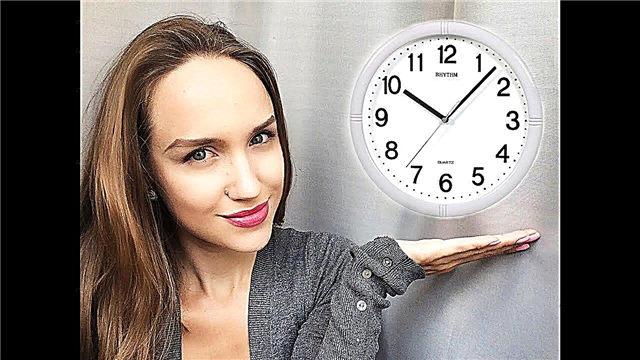
Separation of the placenta is the final stage of labor. After that, the woman finally passes from the category of women in labor to the category of newly-made mothers. Everyone has heard about the afterbirth, but in practice many questions arise about this. In this article, we will talk about what the afterbirth is, how and why it is born, and also open the veil of secrecy over the fate of the afterbirth after childbirth.


What it is?
What women in labor and doctors call the afterbirth, in medicine has a second, scientific name - the placenta. This organ is temporary, it arises, develops, ages and is rejected in a strictly limited time. You need a placenta only during pregnancy. After the child is born, there is no longer a need for a "child's place", it is born, completely terminating its own existence.


The placenta looks like a lozenge, a rounded disc. During pregnancy, its thickness and structure vary somewhat depending on the degree of maturity and some external and internal factors.
The placenta is located on the wall of the uterus, it is the connecting link of two - mother and fetus. Through the placenta, the child receives oxygen, nutrition, nutrients from the maternal bloodstream. Here everything that becomes unnecessary for the baby returns to the mother's body: carbon dioxide, metabolic products. The placenta produces hormones that are important for maintaining pregnancy and stimulating labor. During pregnancy, the "baby seat" serves as a reliable protection for the baby.
In the understanding of obstetricians, the afterbirth is not only the placenta itself, but also some other embryonic structures that depart at the final stage of the birth from the uterine cavity. This is part of the umbilical cord adjacent to the placenta, all membranes and lobules of the placenta itself.
A "child's place" is formed from the day of implantation of a fertilized egg into the uterine cavity. The chorionic villi begin to grow into the endometrium, forming a complex structure. By the 12th week of pregnancy, the chorion becomes a young placenta. Normally, from 35-36 weeks of pregnancy, the placenta is rapidly aging, depleted, and gradually loses its functions. At the time of delivery, the weight of the placenta is on average about half a kilogram.
The importance of the placenta during pregnancy is difficult to overestimate. Given its functions, it becomes an indispensable temporary organ, without which or with pronounced pathologies of which, bearing a child will be impossible.


How is it born?
The placenta in normal labor is born after the baby. When the most difficult stage of childbirth is over, and the baby was born, announcing the delivery room with the first cry, women begin the third stage of labor. The mechanism of rejection of the placenta is laid by nature itself, and therefore the afterbirth leaves itself in the absence of complications. This happens within 20 minutes to 1 hour after the birth of the fetus.
The woman and the obstetrician are notified of the beginning of the birth of the placenta by the resumption of contractions. They are not as painful as pre-push and push-pull. The placenta begins to exfoliate for quite physiological reasons - after the child leaves the uterine cavity, the volume of the reproductive organ is significantly reduced, the walls of the uterus "sag". It becomes difficult to hold onto them afterbirth. In addition, after cutting off the umbilical cord, the blood flow is disturbed, which was fetoplacental, that is, it connected the fetus and the placenta.

A woman is asked to push at the birth of the placenta just once. This is enough for the placenta to completely leave the uterus. During the detachment of the placenta, obstetricians evaluate the signs of its detachment from the uterine wall according to specific signs:
- the uterus softens and changes the angle of deviation to the right side (Schroeder's diagnostic sign);
- the part of the umbilical cord that comes out of the genital tract after the birth of the baby, clamped with a clamp, begins to become longer as the placenta descends from its place down to the exit from the uterus (Alfred's sign);
- an unconscious and strong desire to push, almost the same as the woman experienced at the beginning of the pushing period of childbirth (a diagnostic sign of Mikulich).

There are other obstetric signs and methods for determining the separation of the placenta. The waiting time for the department is usually no more than two hours. If the afterbirth does not naturally come off during this time, it is removed manually.
This happens in different ways, depending on the method chosen by the obstetrician. The woman can be given pain relief or put into a medication sleep. The fact is that manual separation of the placenta is a very important and difficult stage, associated with the risk of developing massive bleeding. During the nine months of pregnancy, the placenta firmly grows into the uterine tissue, the blood vessels intertwine. Inappropriate separation can lead to widespread trauma to the uterine wall.
Most often, obstetricians use the following emergency methods of expulsion of the placenta.
- According to Abuladze - massage of the uterus through the abdomen and through the vagina, followed by the capture of the abdominal wall by the longitudinal fold and at the same time asking to push.
- According to Geter - massage of the fundus of the uterus with fists with gradual pressure and displacement of the placenta downward.
- According to Crede-Lazarevich - the bottom of the uterus is clasped with the right hand so that one finger remains on the front wall, the palm is on the bottom, and the rest of the fingers clamped the back surface of the reproductive organ. After, thus, "squeeze out" the remnants of the placenta.


A prerequisite for all types of manual separation is the independent separation of the "child's place" from the wall of the uterus, followed by a difficult exit of the placenta. If the placenta does not detach, the woman is given anesthesia and the uterine cavity is manually cleaned with the detachment and removal of the placenta.
Complications of the third stage of labor can be very different. The most common are placental accreta, total accretion, remnants of parts of the placenta in the uterus.
In order to avoid postpartum hemorrhage, which can be fatal for a woman, as well as to prevent inflammatory diseases of the uterus and genital tract, after the birth of the placenta, the doctor treats the uterus and vagina with antiseptic solutions.
The afterbirth is placed on a special tray and examined carefully from two sides - from the mother, adjacent to the uterus, and from the child - from the side of the umbilical cord attachment. If the placenta has tears, its integrity is compromised, the doctor will fold it in parts to make sure that there is nothing left in the uterus.

What happens next?
This is the most mysterious moment. Usually a woman in labor is not up to it, she is resting in the postnatal ward, the fate of the "child's place" rarely worries anyone. The placenta was previously given special importance to some peoples. In Russia, for example, it was buried under a young tree so that this tree would grow and grow stronger with the child, give him strength in difficult life circumstances. Some tribes of Africa to this day have preserved the tradition of eating the placenta as a product of incredibly valuable biological and chemical properties.
It is unlikely that a modern Russian woman will be given the afterbirth with them after giving birth, even upon a preliminary statement, although in some regions, for example, in Chechnya, this is a widespread practice. The fact is that the afterbirth is nothing more than biological tissue, exactly the same as amputated limbs. Therefore, with the born placenta, it is customary to act as the law prescribes to deal with biological material.


There may be several options. Its destruction is considered legal by the method of cremation or burial in a general repository of biological waste materials. By law, the maternity hospital has the opportunity to transfer the afterbirth for scientific research, while the consent of the woman in labor is not required. The afterbirth can serve as a science and material for laboratory experiments. The rules for the disposal of biological waste are usually spelled out in the documentation of a particular medical institution.
Without fail, the doctor saves the afterbirth and sends it for histological examination in case of abnormal childbirth, the birth of a sick or dead baby. This is necessary to establish the true cause of developmental defects, genetic abnormalities, the cause of the death of the child. The information obtained will be extremely important in planning a woman's subsequent pregnancy.


If there is no reason for histology, the woman's relatives theoretically have the right to request the issuance of the placenta for its subsequent burial or other purposes, but the maternity hospital has full legal grounds to refuse this request.
As for the vaunted healing properties of the placenta, according to which some peoples recommend to women in labor to eat it, from the point of view of modern medicine, this is nothing more than savagery. The temporary organ has all the signs of human tissue, it even has a karyotype identical to the karyotype of a child (46 XX, if a girl was born, or 46 XY, if a boy was born). Eating the afterbirth is cannibalism in its purest form, since there will be nothing else but human flesh.
Today, there are many different false theories about the beneficial properties of the placenta, about its mystical and other properties. Experts advise women to believe less such theories, and certainly not try to repeat what some of them recommend.
If the burial of the placenta for the relatives of the newly-made mother is fundamentally important (there are fears that someone will extract stem cells from her and enrich himself indescribably, or this is a religious conviction), you must first write a statement about your desire to take the afterbirth at the end of childbirth. Relatives will need to come to the hospital at the end of labor and wait for the afterbirth to be issued, if, of course, they do not leave it for histological examination for strict medical reasons.

For the birth of the placenta and the third stage of labor, see the next video.



